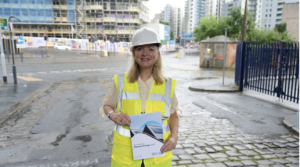The future is rural
 The role of culture in urban regeneration is well documented. But more needs to be done to support the rise of an emerging rural creative economy, says Ian Hunter
The role of culture in urban regeneration is well documented. But more needs to be done to support the rise of an emerging rural creative economy, says Ian Hunter
The Holden Report of 2012 advocated a shift in arts funding away from its urban bias and towards rural areas.
It said: ‘The present situation is considered unfair and disadvantageous to rural communities with the result that their particular cultural needs, artistic aspirations and creative economic potentials are not being fully addressed or supported.’
Some six years on and very little progress seems to have been made. Partly because of this, and as a response to the Creative Industries Federation’s challenge to the creative and digital sectors to get more fully behind the government’s post-Brexit industrial strategy, the Littoral Arts Trust has issued a follow-up publication; the New Creative Rural Economies report will be live on the 20th November 2017.
The report sets out how, for a relatively modest Arts Lottery investment programme by the Arts Council, the creative rural sector has the potential to contribute up to £1bn a year to the national creative economy by 2022. It further argues for new cultural partnerships connecting the urban and rural creative and digital sectors, which could also support other equally compelling national agendas, including the achievement of full economic, social and environmental sustainability goals.
For too long the rural has been thought of as a lesser priority, or as a marginal zone of under-development, in terms of government strategic economic, social and cultural investment programmes. Frustrations about the inequity of local authority funding available for rural areas, poor access to public health and transport facilities, coupled with the lack of broadband access in some rural and remote areas of the country, continue to hold back rural community enterprise and culture-led economic regeneration initiatives in rural areas.
However, the picture is not all bleak and in some cases the it is the rural sector that has been taking the initiative in terms of community-led regeneration and broadband provision in rural areas.
One of the best known examples is the very successful B4RN community broadband initiative based in Melling Lancashire and, further north, the well-established Cybermoor project in Alston, led by rural digital advocate Daniel Heery.
In north Somerset, dairy farmer Michael Eavis and his daughter Emily have helped transform the local rural economy and generate around £30m a year for the national creative economy, through the Glastonbury music festival.
Elsewhere there has been a proliferation of excellent rural arts festivals and books towns (Wigton) initiatives, including the extraordinary Hay-on-Wye Festival which is now being franchised internationally with spin-off Hay Festivals starting up in Peru, Mexico and Denmark. The creative rural sector is clearly on the move and pioneering some quite unique and successful new culture-led rural regeneration initiatives which deserve more recognition and arts funding support.
What has also helped to advance new creative thinking around the rural agenda has been recent interventions by leading artists, academics, digital media and architects, who are advocating for radical new approaches as part of wider cultural sector engagement with the rural and agriculture.
In particular, some rather provocative comments by leading international architect and urban theorist Rem Koolhaas, who has upset some in his profession by suggesting that,
‘Our current preoccupation with the city alone is highly irresponsible. The countryside is now more volatile that the most accelerated city.’
In his presentation to the RIBA Charles Jencks lecture a few years ago, Koolhaas went even further and, basically, accused urban artists and the urban design community of indulging in massive whimsical fantasies, and of being fixated with building yet more Arts Lottery-funded prestige urban art museums. While the rural and agriculture sectors, which he claims are offering design professionals and artists some of the more compelling environmental, intellectual, ethical, aesthetic and economic challenges of our time, go relatively unrecognised and unsupported.
These and other innovative and provocative proposals for future culture-led rural regeneration initiatives will be discussed at the ‘Hyper rural; the end of urbanism’ symposium which will take place at Manchester School of Architecture on 21st and 22nd November.
- For more information click here.















